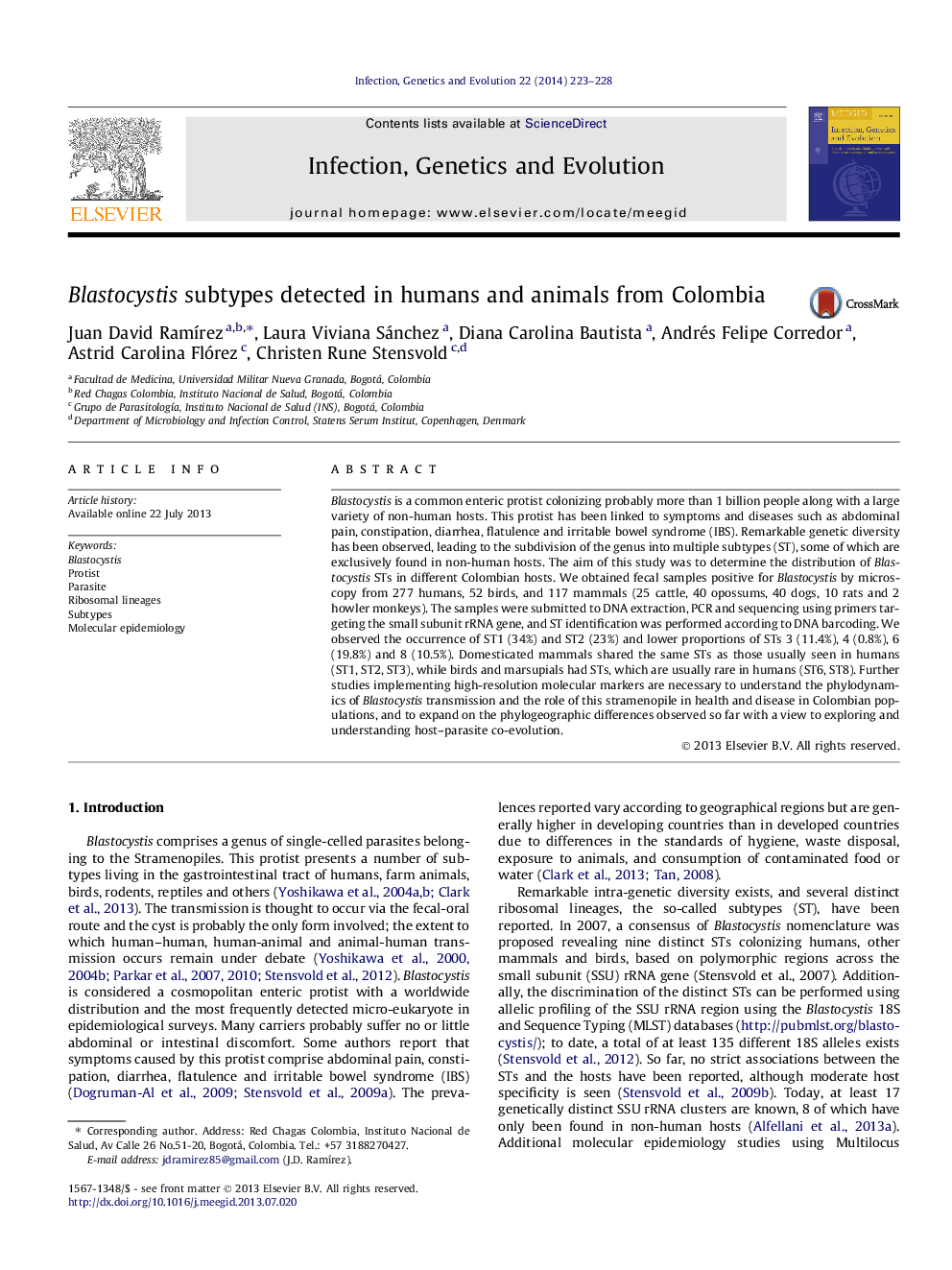| کد مقاله | کد نشریه | سال انتشار | مقاله انگلیسی | نسخه تمام متن |
|---|---|---|---|---|
| 5910134 | 1570181 | 2014 | 6 صفحه PDF | دانلود رایگان |
- The first reliable subtyping of Blastocystis in Colombia.
- We detected subtypes 1, 2, 3, 6 and 8 in Colombian hosts.
- New aspects of the diversity of Blastocystis in South America were addressed.
Blastocystis is a common enteric protist colonizing probably more than 1 billion people along with a large variety of non-human hosts. This protist has been linked to symptoms and diseases such as abdominal pain, constipation, diarrhea, flatulence and irritable bowel syndrome (IBS). Remarkable genetic diversity has been observed, leading to the subdivision of the genus into multiple subtypes (ST), some of which are exclusively found in non-human hosts. The aim of this study was to determine the distribution of Blastocystis STs in different Colombian hosts. We obtained fecal samples positive for Blastocystis by microscopy from 277 humans, 52 birds, and 117 mammals (25 cattle, 40 opossums, 40 dogs, 10 rats and 2 howler monkeys). The samples were submitted to DNA extraction, PCR and sequencing using primers targeting the small subunit rRNA gene, and ST identification was performed according to DNA barcoding. We observed the occurrence of ST1 (34%) and ST2 (23%) and lower proportions of STs 3 (11.4%), 4 (0.8%), 6 (19.8%) and 8 (10.5%). Domesticated mammals shared the same STs as those usually seen in humans (ST1, ST2, ST3), while birds and marsupials had STs, which are usually rare in humans (ST6, ST8). Further studies implementing high-resolution molecular markers are necessary to understand the phylodynamics of Blastocystis transmission and the role of this stramenopile in health and disease in Colombian populations, and to expand on the phylogeographic differences observed so far with a view to exploring and understanding host-parasite co-evolution.
Journal: Infection, Genetics and Evolution - Volume 22, March 2014, Pages 223-228
